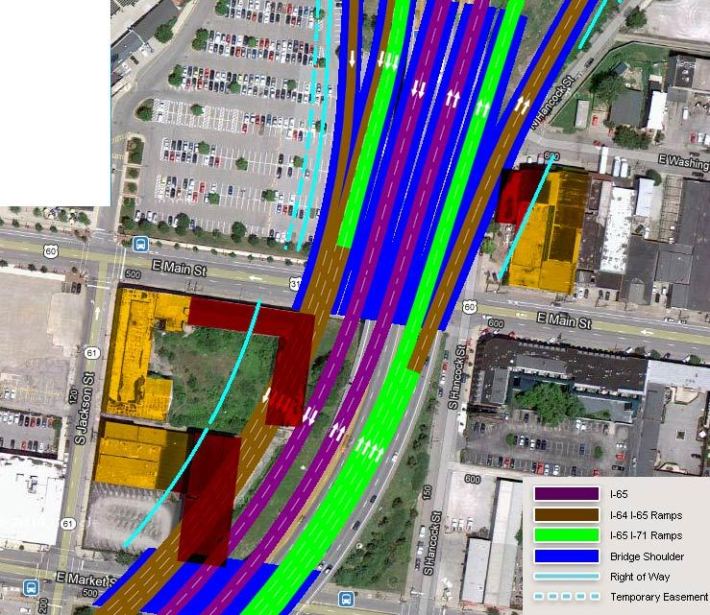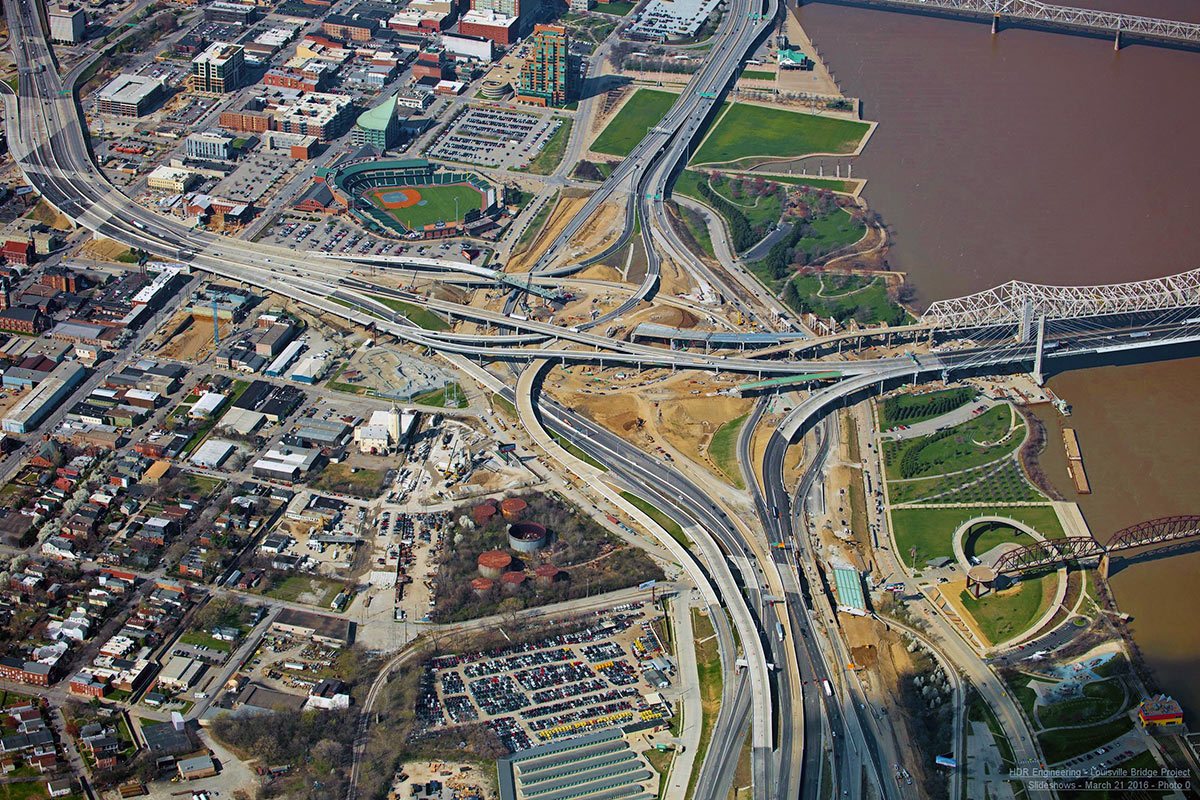Supporters of the I-65 Kennedy/Lincoln bridge in Louisville said $1.3 billion widening project critical to the economy of greater Louisville. But two years after its opening, drivers aren't using it.
The number of vehicles crossing the Ohio River on I-65 daily has decreased by 49 percent, new data [PDF] from the state of Indiana shows.
Turns out, local commuters and truckers don't think the $1 toll is worth it. Traffic has fallen off on the new bridge, but has surged 75 percent on the old US 31 Clark Memorial Bridge, which remains free.
The data is vindicating for long-time critics of the project like Aaron Renn, a conservative writer and native of the area. In a new blog post pointing out the traffic decline, Renn called the project "the biggest transportation boondoggle of the 21st century."
The I-65 bridge replacement and widening was part of a larger $2.6 billion highway mega project that included the construction of two new bridges, jointly funded by the states of Kentucky and Indiana.
But there were plenty of warnings that the project was overbuilt and ill-conceived. The state of Kentucky had to issue almost $800 million in bonds for the project at a Baa3 credit rating — one grade above "junk" status.
In addition, there was a lot of public opposition — especially to a portion of the plan that called for rebuilding and expanding I-64 along the waterfront near downtown Louisville.
A grassroots group called 8664 campaigned for the state to instead tear down the highway. The idea was popular; 11,000 people signed petition supporting the idea.
A prominent traffic engineer, Walter Kulash, completed a feasibility study and said the group's plan "meets the purpose of the Bridges project, at a fraction of the Bridges cost, while delivering vastly more civic quality of life benefits."

But the two activists who led the effort — J.C. Stites and Tyler Allen — told Streetsblog in 2013 that they were "crushed" by the opposition.
“If we didn’t build this, we would become the bottleneck for the Southeastern United States,” project spokesperson Chad Carlton told the New York Times in 2013.
Kentucky's then-governor, Steven Beshear, was another supporter.
Instead of the teardown, the state forged ahead with an 18-lane highway separating the up-and-coming NuLu neighborhood from the waterfront. Part of the project was the reconstruction of an enormous "Spaghetti Junction" occupying acres and acres of potentially valuable downtown land.
In 2017, Vox called Spaghetti Junction "a testament to how cars degrade cities."
It's really a tragic story.
"The physical gap in the urban fabric brought about by a 280-foot-wide, 12-lane Interstate highway slicing off Louisville’s most vibrant urban neighborhood — Nulu — from Downtown is sure to be felt as the city continues to push for a livable, walkable, urban core," Louisville urbanist and architect Branden Klayko wrote on his blog Broken Sidewalk the day construction crews began leveling historic buildings to make way for the widened 12-lane highway.







